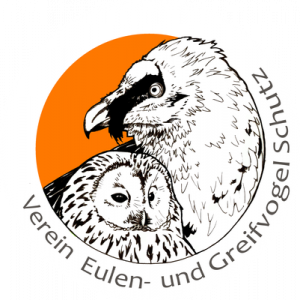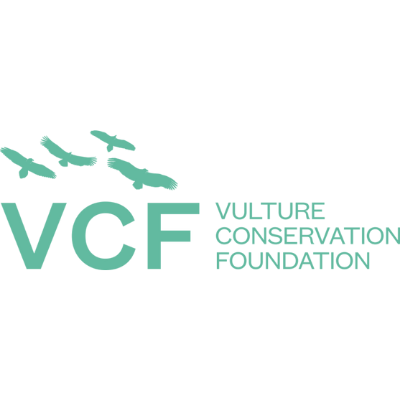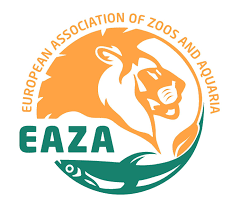
We welcome the first European Bearded Vulture chick of the new 2022/23 captive breeding season. The chick BG 1159 hatched on 19 January 2023 at oat the Richard Faust Zentrum Specialised Breeding Centre (RFZ) in Austria and descends from an old and successful breeding pair, BG108 and BG175, that also laid the first egg of this breeding season.
Just like last year, the first Bearded Vulture chick of 2023 hatches in the Austrian centre
The pair BG 108 and BG 175 at the Richard Faust Zentrum Specialised Breeding Centre are becoming known for being the first to lay a clutch and hatch a chick every captive breeding season. After laying the egg on 26 November 2022, the pair BG 108 and BG175 laid a second fertile clutch 10 days later. Bearded Vultures are among the most devoted parents, sharing equally the task of incubation for a period of almost two months.

Surprisingly, on 10 January, the clutches had to be rescued after a severe fight overnight between the pair and were exchanged with dummy eggs in the nest. Eight days later, the centre’s staff offered the egg back to the parents, and BG 1159 hatched without any problems on 19 January. The second egg of this pair is still in the incubator and will hopefully hatch in the coming days.
One of the most successful breeding pairs within the Bearded Vulture Captive Breeding Network
The Bearded Vulture Captive Breeding Network, coordinated by the Vulture Conservation Foundation (VCF) on behalf of EAZA’s EEP (Bearded Vulture EEP), gathers 44 institutions, which includes ZOOs, private centres, NGOs and specialised breeding centres. RFZ hosts most of the Bearded Vultures in captivity, including the pair that has been very ‘punctual’ and efficient every year at laying and incubating their eggs.
The male Bearded Vulture BG 108 hatched on 6 February 1989 and descends from an extraordinarily important male. His father, Stavros, was the only founder bird of the EEP deriving from the endangered population in Crete. He eventually arrived at RFZ after being rescued from the wild due to suffering severe gunshot injuries. Many of Stavros’ offspring are currently important breeding pairs within the network and in the wild. Despite being 31 years old, the female Bearded Vulture BG175 is still laying double clutches every year, as it happened in 2021 too, ensuring that the lineage of Stavros is still very well represented in the EEP. The pair that has been together since 2001 hatched a total of 26 chicks from 30 clutches, greatly contributing to our reintroduction and restocking efforts. In fact, they are the second most successful breeding pair in the entire EEP after BG 017 Jan and BG 070 Hanneke, which hatched 40 offspring and also live at the RFZ.
The chick has a sibling!



The second egg of the pair hatched on 27 January 2023 in the incubator with a little help. RFZ’s staff will look after the chick for the first few days before transferring it to an experienced foster pair. Even though Bearded Vultures can lay and hatch two eggs, just like in this case, due to an evolutionary behaviour called cainism, where the older and stronger chick kills the younger one, we remove the second chick from the nest in captivity since our goal is to produce as many viable chicks as possible to support reintroduction programme. However, it’s still crucial for Bearded Vultures to naturally rear chicks themselves to ensure they behave like wild birds when they grow up and to avoid human imprinting. We are glad to report that both chicks are developing well so far.
Reintroducing and restocking Bearded Vultures populations
Bearded Vultures naturally rear chicks in captivity to ensure they behave like wild birds when they grow up. Captive breeding plays a vital role in fulfilling our ambition to restore the European Bearded Vulture populations in the wild. To achieve this, we release young birds in priority areas where the species have disappeared or are under threat.
For instance, we released many of the offsprings of this pair for reintroduction purposes in – 1 in the Alps, 3 in France (Vercors, Barronies and Grands Causses) and 2 in Andalusia. To guarantee a stable production of captive-bred chicks in the long term and ensure viable Bearded Vulture populations in the wild, we must maintain a high number of captive birds that are also genetically diverse. So, every year, we keep some captive-bred chicks in captivity, depending on the outcome of each breeding season.
In this breeding season so far, we have 33 pairs that laid 53 eggs. As the laying period stretches from autumn to spring, several pairs still have not laid eggs, especially the least experienced ones. Let’s hope that all pending pairs will still lay their clutches and new ones start to reproduce. Fingers crossed!
Do you want to watch videos of pairs and get a glimpse into their behaviour? Follow our Instagram account to stay updated with the new captive breeding season!







